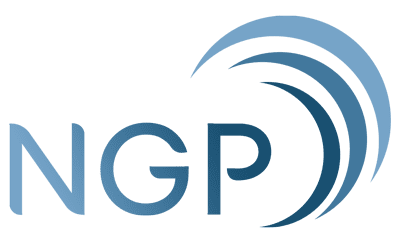Successful marketing and PR hinges on one crucial aspect: a deep understanding of your audience.
It doesn’t matter if you’re a new brand or a business that’s been around for years. Knowing your audience inside and out–and all the ways their preferences change and transform–is what drives better engagement, higher ROI, and a more streamlined approach across all your platforms.
To better understand its importance, we will explain why defining your target audience matters and how it benefits your PR and marketing efforts.
What is a target audience?
A target audience is the specific group of people a brand seeks to engage with through its products, services, or content. This group is usually defined by demographic factors like age, gender, location, and income. Psychographic factors, such as interests, values, lifestyle, and behaviors, also come into play.
Knowing your audience is necessary for PR and marketing. No audience, no impact! It ensures that your messaging resonates well with their unique needs and preferences, helping you craft more effective and impactful campaigns.
What are the benefits of defining a target audience for PR and marketing?
- Improved campaign impact
If a brand understands its target audience well, it can design campaigns that truly hit home. Whether it’s creating the right message, choosing the best platforms, or telling stories that speak to people’s needs, understanding your audience makes all the difference.
Check out how local brands are tapping into the growing popularity of TikTok in the Philippines—especially among Gen Z and millennial audiences—to launch impactful campaigns. Some of our favorites that are making waves on TikTok include Victory Liner, Ming Sing Agua de Florida, GRWM Cosmetics, Mera, and more. It is their target audiences who usually use the app.
- Strengthened brand positioning
When you know your audience, positioning your brand effectively in the market becomes easy. A clear and compelling brand position not only distinguishes you from competitors but also strengthens your identity, making it memorable for consumers.
Take Angkas, for instance. They anchor their brand on masa humor, and everyone–masa or not– loves their marketing tactics anyway!
The bottom line is that this strategic approach helps present your brand in the best possible way.
- More efficient content creation
Creating compelling content that resonates with your specific audience is easier and far more effective than trying to appeal to everyone. You can develop content—whether it’s blog posts, videos, or social media updates—easily. This ensures you’re not wasting time on content that doesn’t connect, but craft meaningful, impactful pieces that drive engagement and deliver real value.
- Better personalization
Personalization holds the future of PR and marketing. Campaigns based on the audience’s interests resonate more. Whether through personalized emails, targeted ads on social media, or custom content, your messages will feel more relevant and engaging.
For instance, GRWM Cosmetics, a local makeup brand, constantly designs campaigns for beauty enthusiasts, ensuring the content aligns with its mission. The brand listens to and provides what its audience wants and actively engages with them by showcasing products that address specific beauty needs, such as shade range.
How do you define your target audience?
Defining your target audience is about understanding who you’re trying to reach and tailoring your content to connect with them meaningfully. This process involves research, analysis, and segmentation.
Here’s a step-by-step guide to help you identify and refine your target audience:
Step 1: Start with market research
The first step is to dive into some market research. This is your chance to truly understand what makes your customers tick, what trends are shaping the industry, and what your competitors are up to. There are a few ways to go about this:
- Surveys and Feedback: Surveys and questionnaires are great tools for uncovering what your customers care about, their pain points, and what they expect from products or services like yours.
- Competitor Research: Take a look at who your competitors are going after and how they’re doing it. By analyzing their strategies, you can find areas where you can stand out or tap into unmet needs in the market. It’s all about carving your own space while learning from others.
Step 2: Segment your audience
After collecting your research, it’s time to break your audience down into smaller, more focused groups based on common characteristics. This segmentation process helps you create more personalized campaigns that speak directly to the unique needs and preferences of each group.
Here are a few ways to approach segmentation:
- Demographic Factors: Start by sorting your audience based on basic traits like age, gender, income, and location.
- Psychographics: Go a step further by considering things like values, interests, and lifestyle. This helps you connect with your audience on a deeper, more emotional level.
- Behavioral Patterns: Look at how your customers engage with your brand—whether through purchasing habits, brand loyalty, or online interactions. Understanding these behaviors can give you insights into what drives their decisions.
Step 3: Leverage data analytics
Data analytics is a game changer when it comes to knowing your audience. By digging into the data you have, you can get a clear picture of who’s interacting with your content and what’s actually resonating with them.
Tools like Google Analytics, as well as the insights available on platforms like Facebook and Instagram, provide a wealth of information—everything from demographic details to engagement rates and user behavior.
Step 4: Test and refine
Audience preferences aren’t set in stone—they evolve over time as trends change, new interests emerge, and external factors influence consumer behavior. That’s why it’s important to keep testing your campaigns and getting feedback. A/B testing, along with regular performance checks, helps you adjust your approach so it keeps resonating with your audience.
If you stay flexible and willing to make tweaks, you ensure your PR and marketing efforts stay in tune with what your audience wants. It’s all about being proactive! Keep testing, keep adjusting, and you’ll stay relevant and effective in the long run.
Know your audience now, achieve success later!
There’s no overstating how crucial it is to truly understand your target audience for the success of your campaigns and your brand as a whole. It’s the cornerstone of everything you do in marketing and public relations. At the end of the day, understanding your audience isn’t just a marketing tactic; it’s about forming lasting relationships that drive your brand’s long-term success.
If you’re looking to make this process quicker and more effective, partnering with a public relations agency can take things to the next level! They bring the right expertise, insights, and tools to ensure your campaigns connect with the right people at just the right moment.
At NGP-IMC, we have been doing this for over 25 years. We ensure a clear, data-driven roadmap that helps brands reach their goals.
Ready to start your PR and marketing success? Talk to us today!

Irishbeth Relampagos is a writer who specializes in crafting copies across various content formats, mainly SEO blogs and marketing materials. Her passion for translating ideas into impactful content has helped brands connect with their audiences in ways that transcend superficial and transactional interactions.
Irishbeth pursued English Language Studies at Polytechnic University of the Philippines where she honed her skills in writing. While originally focused on writing poems and opinion pieces, she shifted her career path to content writing after a successful stint as an SEO content writer during her internship.


